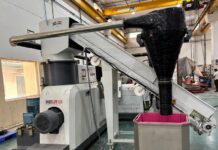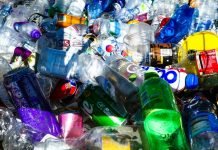EPFL scientists have developed the latest PET-like plastic from the plants’ non-edible parts. This plastic is heat-resistant and an excellent barrier to the gasses such as oxygen. All these make it a great choice when it comes to food packaging.
People are becoming more concerned about getting rid of plastic accumulation and getting away from fossil fuels. The goal is to solve the challenge of climate change.
Considerable efforts are being made to develop recyclable or degradable polymers produced from non-edible parts of plants, known as lignocellulosic biomass.
In 2021, about 8.3 billion tons of plastic waste were produced worldwide. This problem is getting serious with each passing day because the number is constantly increasing. Plastic pollution harms plants, animals, and humans through its toxic pollutants. It can take thousands of years for plastic to break down completely. Therefore, the damage is long-lasting.
Conventional plastics are widespread because they perfect heat stability, low cost, processability, compatibility, and mechanical strength features. An alternative replacement for plastic must surpass or at least match. Till now, it has been a difficult task.
PET-like plastic to replace other plastics
A biomass-extracted plastic like PET to replace multiple present plastics besides being environment-friendly has been developed by the scientists led by EPFL’s School of Basic Sciences’ professor Jeremy Luterbacher. The specialty is its structure, as the new plastic can be recycled chemically and degrade back to the harmless sugars in the environment.
We often cook the non-edible plant parts in inexpensive chemicals to produce the plastic precursor. Keeping the structure of the sugar intact inside the plastic’s molecular structure is a simple alternative.
Adding aldehyde can stabilize some plant material fractions and prevent destruction during extraction. After repurposing this particular chemistry, the experts re-build a useful bio-based chemical as a precursor of plastic.
The ‘sticky’ groups can be clipped together on the sugar molecules on both sides by using glyoxylic acid in place of formaldehyde. This allows them to serve as plastic building blocks. This technique has been used to convert about 25% of the agricultural wastes’ weight or 95% of the purified sugar into plastic.

Photo credit: Maxime Hedou
New strategies to eliminate plastics
These plastics’ perfectly rounded properties allow them to be utilized in textiles, packaging, electronics, and medicine. The researchers have already made packaging films. These fibers can be spun into filaments and textiles to facilitate 3D printing.
Exciting properties are possessed by plastic, especially for applications such as food packaging, according to Luterbacher. The sugar structure staying intact is one of the best properties of plastic that makes it unique. This particular fact makes things very easy to make as there is no need for you to modify what nature offers you. It can degrade quickly as it can go back to a molecule that is already abundant in nature.
Scientists are actively trying to make the planet plastic-free completely. New strategies and techniques are already under development and can be seen in the future to eliminate plastics from Earth.











